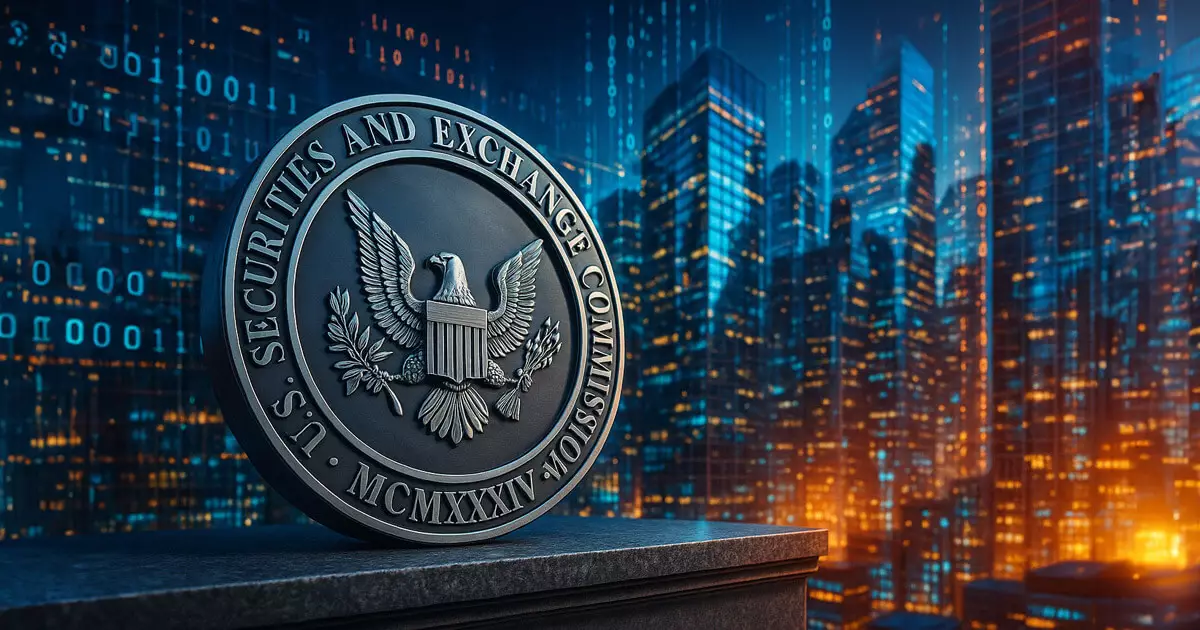In a rapidly evolving financial landscape, clarity and innovation often find themselves at odds, particularly when it comes to the intersection of cryptocurrency and regulation. Recent developments emanating from the U.S. Securities and Exchange Commission (SEC) highlight a pivotal moment in this ongoing dialogue. The SEC’s Crypto Task Force has been intensively engaged in discussions with prominent industry players, including Nasdaq and Plume Network, focusing on the potential implementation of a regulatory sandbox designed to streamline the issuance and trading of tokenized securities. While innovation is crucial for the modern economy, the manner in which regulators choose to shape this ecosystem is equally important, and it raises vital questions about what we can expect moving forward.
The Promise of Tokenization: A Double-Edged Sword
The allure of tokenized securities is clear: they promise greater liquidity, less friction in transactions, and enhanced market accessibility. However, as the discussions with players like Nasdaq have shown, there is a palpable concern about the safeguards traditionally associated with the securities market being undermined. The concept of a regulatory sandbox may allow for a creative testing ground where digital assets can find their niche, but it also raises concerns about market integrity and investor protection. In a world where the pace of technological advancement often outstrips regulatory frameworks, it is imperative that the SEC and other governing bodies tread carefully. A regulatory sandbox must not devolve into a wild west of financial innovation devoid of essential protections.
Is Self-Certification a Recipe for Chaos?
A striking aspect of proposals emerging from the SEC meetings is the call for self-certification of asset classifications within a regulated sandbox. This approach could potentially expedite the entry of new financial products into the market but could also lead to a scenario where issuers take undue liberties in classifying their offerings. The potential for misrepresentation or misunderstanding could significantly harm investors, particularly retail investors who may lack the sophisticated knowledge to navigate this complex terrain. It is alarming to consider scenarios where diluted regulatory oversight conflates innovation with negligence, especially in an industry known for volatility.
The Role of Legacy Systems: Optimization vs. Innovation
The legacy systems often cited as obstacles to innovation within the blockchain space cannot be overlooked. Companies like Etherealize argue convincingly for a shift in perspective regarding transfer agent regulations that currently compel issuers to maintain parallel off-chain ledgers. Yet, while their calls for recognizing secure blockchains as authoritative share registers are compelling, there should be a structured, phased approach to such a transition, rather than a chaotic leap into the unknown. The existing systems, despite their antiquity, have stood the test of time for a reason and may carry valuable lessons that should inform future regulations.
Industry’s Compliance vs. Investor Protection: The Balancing Act
As various stakeholders gather around the regulatory table, it is vital to remember that the SEC’s primary mandate revolves around protecting investors. If the SEC leans too heavily towards industry compliance—catered overly to the demands of companies looking to exploit new avenues at the expense of consumer safety—we may inadvertently erode the integrity of our financial markets. The call for clearer taxonomies and modular rulebooks would assist in delineating the landscape, but these can only be effective if they are buttressed by robust investor protection mechanisms. At no point should the push for innovation eclipse the fundamental principles of accountability and safety.
A Call for Insights: What Does the Future Hold?
The discussions taking place today will certainly shape the financial structures of tomorrow. With participants from Nasdaq, Plume Network, and Etherealize all urging the necessity for frameworks that support tokenization while ensuring robust protections, the imminent roadmap remains fraught with uncertainty. As regulators entertain sandbox models for digital assets, dialogue between the crypto industry and traditional regulatory mechanisms must continue to evolve. The path toward a secure and innovative financial future may be complex, but it is crucial that we pursue it with both ambition and caution. What emerges from this crucial intersection of technology and regulation will likely set the course for the next generation of investors and market dynamics.















